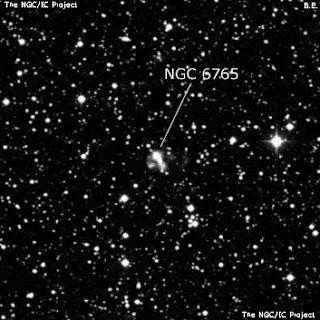If you have been reading this blog for any length of time, you know by now that I am interested in observing as many NGC objects as I can. The fact that I am in no real hurry, but will take my time observing each one, is a dead giveaway that I will never complete my project. Even if I lived in New Mexico and had nearly year round access to great skies, my project would never be completed in my lifetime. If I was interested in a mere glance at an object, and carried out marathon NGC observing sessions during clear nights, I might have a chance. But as I have already indicated in an earlier post, this is not my idea of observing. Of course there are many objects, faint galaxies for example, that do not require much observing time once located. But there are so many wonders that repay long looks, using different eyepieces, and even involving some sketching, that observing more than 5 or 6 in one night is a challenging task for me.
I have chosen several constellations to view as the seasons pass. For late summer I will move on to Cygnus and Cassiopeia. Later in the autumn I will return to studies of Cetus, then back into Lepus. During the winter I will continue with Monoceros, then on to Leo once more in early spring, and Bootes later on. I always have planned sessions ready at hand, though I often enjoy just wandering about up there, too.
The deep sky objects of Cygnus were briefly discussed in the previous post. Now it's Cassiopeia's turn. Like Lyra (now completed) and Cygnus, my focus is on the NGC and IC objects. However, since a 12" mirror can do so much more under a dark sky, I have also included clusters from other catalogues. Many are very dim and small, but a few promise just as much fun and adventure as some of the better NGC objects.
Cassiopeia has a grand total of 36 NGC objects, along with 11 IC ones. These 47 objects are my main focus of interest. 29 of the NGC entries are open clusters, including M 52 and M 103 (and, of course, oc 7789!). I can also look forward to 4 galaxies (2 already logged) and 3 galactic nebulae.
The IC list adds 4 more open clusters, 4 nebulae, 2 planetaries and another galaxy.
In the "other" category come no less than 59 open clusters from catalogues besides the NGC. It would appear that a few objects were overlooked back in the day by Dreyer and company! Many of these, due to their faintness and small size, will get just a quick glimpse. However, any special ones noted will get as much viewing time from me as an NGC object.
I can therefore look forward to 92 open clusters, 7 galactic nebulae, 5 galaxies and 2 planetary nebulae in this wonderful constellation (100 deep sky objects!). Using Uranometria All-Sky Edition, my clipboard notes are fully prepared, my mirror collimated and my eyepieces cleaned. All I need now is a much later moonrise time and some great skies for observing. Check back in mid-September to see how I am doing with my Cygnus and Cassiopeia project.
Mapman Mike





